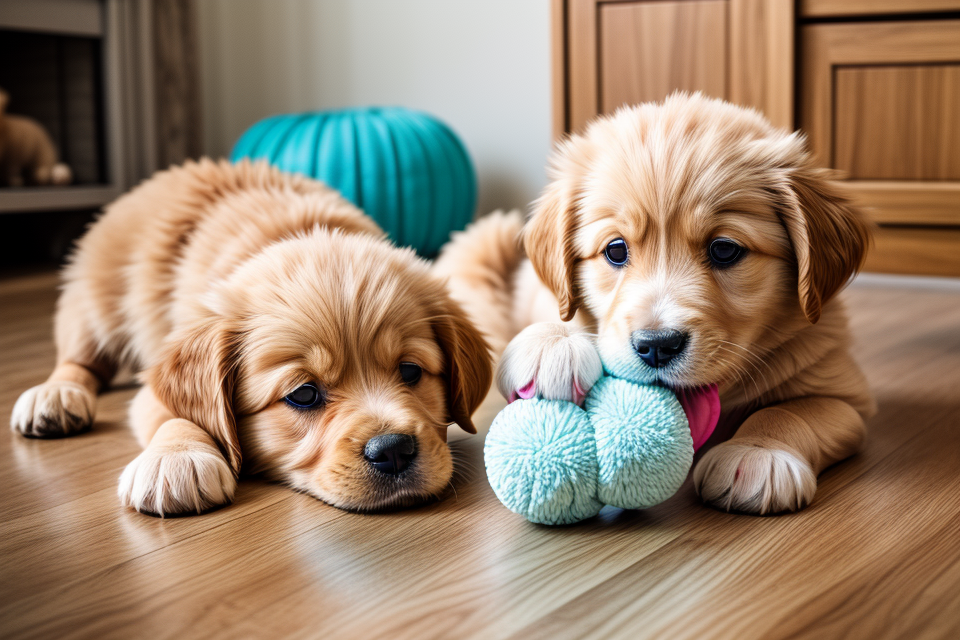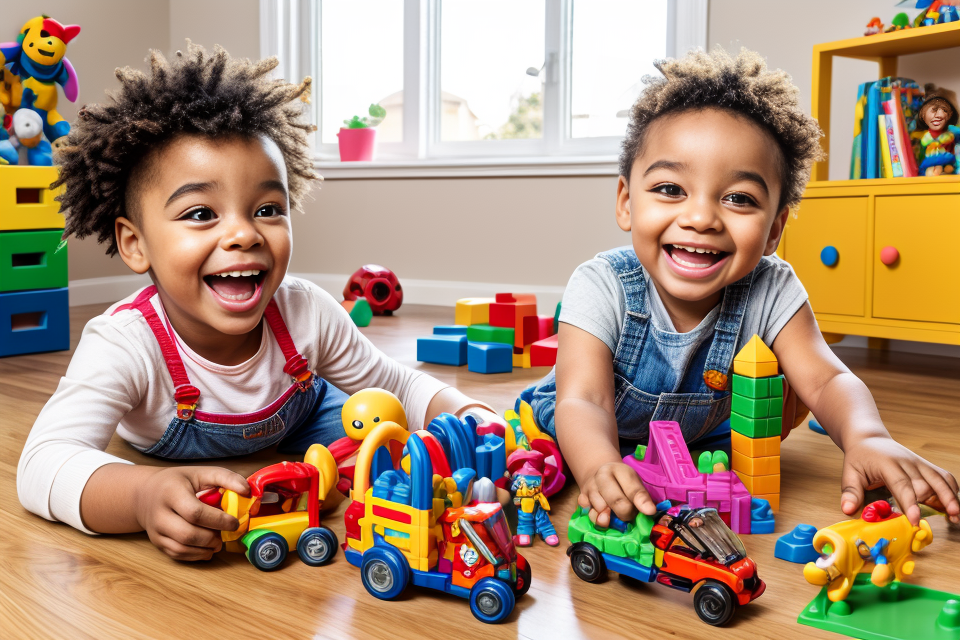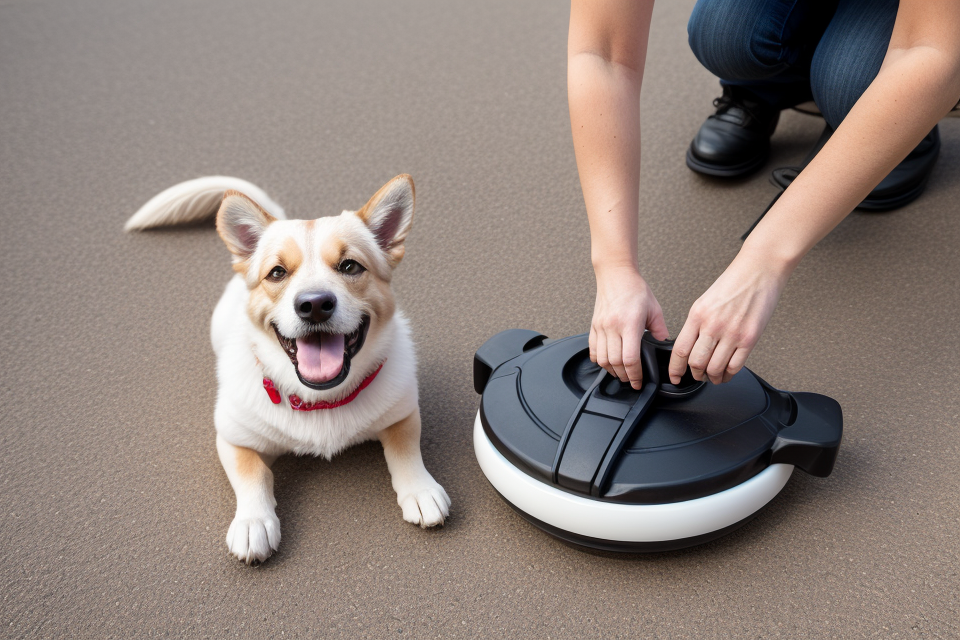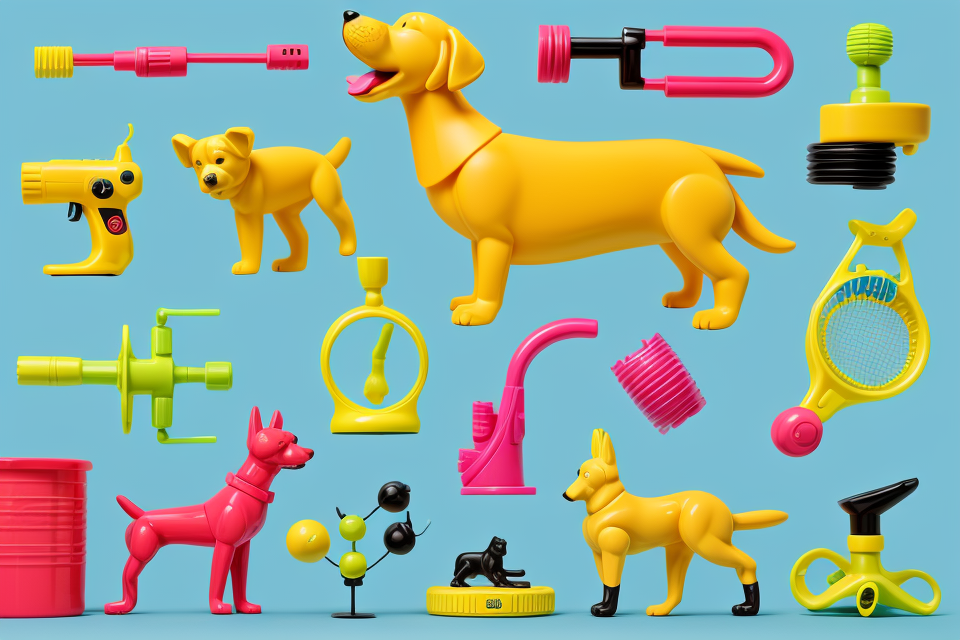Is it okay to let your furry friend tear up toys? This is a question that many dog owners ask themselves. While some may think that it’s perfectly fine for their pup to have a blast ripping apart toys, others may worry about the potential negative effects on their dog’s behavior and well-being. In this article, we’ll explore the pros and cons of letting your dog tear up toys, and provide you with valuable insights to help you make an informed decision. So, buckle up and get ready to dive into the world of dog toys and their impact on your furry friend’s behavior!
It is normal for dogs to destroy toys, but it is important to ensure that they are not destroying them in a way that could harm them. Dogs may chew on toys as a way to relieve stress or boredom, and it can also be a natural instinct for them. However, if your dog is destroying toys in a way that is excessive or causing damage to the toy, it may be a sign of a behavioral issue that should be addressed. It is important to provide your dog with a variety of toys to keep them entertained and to monitor their behavior to ensure that they are not destroying toys in a harmful way.
Benefits of allowing your dog to destroy toys
Mental stimulation
- Satisfies your dog’s natural instinct to chew and destroy things
- Provides a form of entertainment and keeps your dog engaged
- May reduce the likelihood of destructive behavior in other areas of the house
Providing your dog with the opportunity to destroy toys can have several mental benefits. Firstly, it helps satisfy your dog’s natural instinct to chew and destroy things. This is especially important for dogs that were bred for hunting or have high prey drive, as they may have a strong desire to destroy objects. Allowing them to engage in this behavior can help release pent-up energy and frustration.
In addition to satisfying your dog’s natural instincts, destroying toys can also provide a form of entertainment and keep your dog engaged. This is especially important for dogs that are left alone for long periods of time, as it can help prevent boredom and reduce the likelihood of destructive behavior in other areas of the house. By providing your dog with a variety of toys to destroy, you can keep them mentally stimulated and satisfied.
It is important to note that not all dogs will benefit from destroying toys. Some dogs may become overly excited and aggressive when destroying toys, which can lead to destructive behavior in other areas of the house. If your dog exhibits this behavior, it may be best to limit their access to toys or provide alternative forms of mental stimulation.
Physical exercise
Dogs are naturally active animals that require regular exercise to maintain a healthy lifestyle. However, many dog owners struggle to provide their pets with the necessary physical activity due to busy schedules or lack of space. Allowing your dog to tear up toys can be an excellent way to provide them with the physical exercise they need.
- Tearing up toys can provide your dog with physical activity and help satisfy their need for exercise. Dogs have a natural instinct to chew and destroy objects, and providing them with toys to destroy can help fulfill this instinct. This type of exercise is especially beneficial for high-energy breeds, such as German Shepherds and Golden Retrievers, who require more physical activity to stay healthy.
- Tearing up toys can help prevent boredom and destructive behavior caused by lack of physical activity. When dogs are left alone for long periods of time, they can become bored and destructive, chewing on furniture or other household items. Providing them with toys to destroy can help keep them occupied and prevent them from engaging in destructive behavior.
- Tearing up toys can also help improve your dog’s problem-solving skills. Many toys designed for dogs are interactive and require your dog to use their problem-solving skills to figure out how to get to the hidden treats or toys inside. This type of play can help improve your dog’s cognitive abilities and provide mental stimulation.
Overall, allowing your dog to tear up toys can provide them with the physical exercise they need to stay healthy, as well as mental stimulation and problem-solving skills. It’s important to provide your dog with a variety of toys to destroy, and to monitor their behavior to ensure they are not becoming too aggressive or destructive.
Bonding with your dog
Engaging in playtime activities with your dog can significantly enhance your bond and strengthen your relationship. By allowing your dog to tear up toys, you provide an opportunity for positive reinforcement and training, while also creating a memorable experience for both you and your furry companion.
Playing tug-of-war
Tug-of-war is a classic game that can be played with your dog using a rope or a toy. This interactive game encourages your dog to use their pulling strength, which can help to build muscle and improve their physical health. Playing tug-of-war also provides an opportunity for you to bond with your dog, as you both engage in a fun and entertaining activity together.
Hide-and-seek
Hide-and-seek is another game that can be played with your dog, which helps to build trust and enhance your bond. This game involves hiding a toy or a treat and then encouraging your dog to find it. As your dog searches for the hidden item, they will use their sense of smell and their ability to navigate their environment, which can help to improve their cognitive abilities. Additionally, the excitement and joy that your dog experiences when they find the hidden item can strengthen the bond between you and your furry companion.
Positive reinforcement and training
Allowing your dog to tear up toys during playtime also provides an opportunity for positive reinforcement and training. By praising and rewarding your dog for good behavior, you encourage them to repeat those behaviors in the future. This positive reinforcement can help to strengthen your bond with your dog, as they will associate playing and interacting with you as a positive and enjoyable experience.
In conclusion, engaging in playtime activities with your dog, such as playing tug-of-war or hide-and-seek, can significantly enhance your bond and strengthen your relationship. By allowing your dog to tear up toys, you provide an opportunity for positive reinforcement and training, while also creating a memorable experience for both you and your furry companion.
Potential drawbacks of allowing your dog to destroy toys
Destruction of valued items
One potential drawback of allowing your dog to destroy toys is the destruction of valued items. While it may seem harmless for your dog to chew on a toy, they may accidentally destroy or damage valued items in the process. This can include shoes, books, or other items that hold sentimental value.
In addition to being frustrating, the destruction of valued items can also be costly to replace. Shoes, for example, can be expensive to replace, and books may be irreplaceable. It is important to consider the potential damage that your dog may cause when deciding whether or not to allow them to destroy toys.
Another thing to consider is that some toys may contain small parts that can be easily removed and swallowed by your dog. This can cause serious health problems and even death. So, it’s important to make sure that the toys you give your dog are safe and appropriate for their size and age.
Overall, while letting your dog destroy toys may seem like a harmless activity, it can have potential drawbacks. It’s important to weigh the pros and cons and make an informed decision about whether or not to allow your dog to destroy toys.
Aggression towards other dogs or people
When dogs are allowed to destroy toys, they may become overly possessive and aggressive towards other dogs or people who try to take away their toys. This can lead to socialization and behavioral problems.
Dogs are social animals and they need to learn how to interact with other dogs and people in a positive way. If they are allowed to become possessive over toys, they may start to show aggression towards other dogs or people who come near them while they are playing with their toys. This can lead to fear-based aggression, where the dog becomes defensive and protective of their toys, even if they are not being threatened.
Additionally, when dogs become possessive over toys, they may start to display territorial behavior. This can lead to aggression towards other dogs or people who come near their toys, even if they are not threatening them. This can be especially problematic in dog parks or other areas where there are a lot of other dogs and people around.
Furthermore, if a dog becomes possessive over toys and starts to show aggression towards other dogs or people, it can be difficult to correct this behavior. This is because the dog may become more possessive over time, and may become more aggressive if they feel threatened. This can make it difficult for the dog to socialize with other dogs or people, and can lead to behavioral problems down the line.
Overall, it is important to supervise your dog when they are playing with toys, and to prevent them from becoming possessive over them. This can help to prevent aggression towards other dogs or people, and can help your dog to develop positive socialization skills.
Neglect of basic obedience training
When a dog is allowed to destroy toys, it may become less responsive to basic obedience commands such as “sit” or “stay.” This lack of responsiveness can make it more difficult to train your dog in other areas. Here are some reasons why neglecting basic obedience training can be detrimental to your dog’s behavior:
- Lack of discipline: Allowing your dog to destroy toys without any consequences may lead to a lack of discipline. Dogs need structure and boundaries to understand what is acceptable behavior and what is not. If they are not disciplined for destroying toys, they may become more challenging to train in other areas.
- Confusion about expectations: If your dog is not clear on what is expected of them, they may become confused and frustrated. This can lead to behavior problems such as chewing, barking, or digging.
- Delayed training: When a dog is allowed to destroy toys, they may not learn basic obedience commands as quickly as they would if they were being disciplined for this behavior. This can delay training in other areas and make it more difficult to teach your dog new tricks.
- Increased aggression: Dogs who are not trained in basic obedience commands may become more aggressive. This is because they may feel threatened or scared and may lash out as a result. It is important to train your dog in basic obedience commands to prevent aggression and promote good behavior.
How to balance the benefits and drawbacks of allowing your dog to destroy toys
Choose durable toys
When it comes to deciding whether or not to allow your dog to destroy toys, one factor to consider is the durability of the toys themselves. Here are some tips for choosing toys that can withstand your dog’s teeth and claws:
- Opt for toys made from durable materials: Some materials, such as rubber or nylon, are more resistant to damage than others, like soft plush toys. Look for toys that are made from tough materials that can hold up to your dog’s playstyle.
- Consider the size and shape of the toy: Bigger toys may be more durable than smaller ones, and toys with fewer seams or joints may be less likely to break apart. However, keep in mind that larger toys may also be more difficult for your dog to carry around or manipulate.
- Invest in high-quality toys: While it may be tempting to opt for cheaper, disposable toys, investing in high-quality toys can save you money in the long run. Durable toys will last longer and be more resistant to damage, so you won’t have to replace them as often.
By choosing durable toys, you can help minimize the risk of destruction to other items in your home, while still allowing your dog to engage in satisfying play.
Set boundaries and rules
When it comes to allowing your dog to destroy toys, it’s important to set boundaries and rules to ensure that the behavior is not causing any harm or damage. Here are some guidelines to follow:
Establish clear boundaries and rules
The first step in setting boundaries and rules for your dog’s toy destruction behavior is to establish clear and specific guidelines. This means that you should be clear about what behavior is acceptable and what is not. For example, you might specify which toys your dog is allowed to destroy and where they are allowed to do so.
Limit the destruction to specific areas
One way to limit the damage caused by your dog’s toy destruction behavior is to limit the destruction to specific areas. For example, you might designate a specific room or area of your home where your dog is allowed to destroy toys. This will help to prevent damage to other areas of your home and will make it easier to monitor your dog’s behavior.
Allow destruction only during specific times of the day
Another way to limit the damage caused by your dog’s toy destruction behavior is to allow destruction only during specific times of the day. This will help to prevent damage to toys when you are not around to supervise and will give you more control over the behavior. For example, you might allow your dog to destroy toys only during designated playtime sessions.
Be consistent with the rules
It’s important to be consistent with the rules that you set for your dog’s toy destruction behavior. This means that you should stick to the rules consistently and not make exceptions unless necessary. This will help to ensure that your dog understands what is expected of them and will prevent confusion and confusion.
In conclusion, setting boundaries and rules for your dog’s toy destruction behavior is an important step in ensuring that the behavior is not causing any harm or damage. By establishing clear guidelines and being consistent with them, you can help to prevent damage to your home and toys and can ensure that your dog is behaving appropriately.
Supervise your dog
Supervising your dog while they are destroying toys is an important step in preventing accidental destruction of other items in your home. By closely monitoring your dog’s behavior, you can also intervene if necessary to ensure that they are not becoming too aggressive or destructive.
Here are some tips for supervising your dog:
- Choose a designated area for your dog to destroy toys. This can be a specific room or a designated area in a room.
- Observe your dog’s behavior while they are destroying toys. Look for any signs of aggression or excessive destruction.
- Intervene if necessary. If your dog becomes too aggressive or destructive, remove the toy and provide a different one.
- Keep an eye on your dog’s toys. Make sure that they are all in good condition and not posing a danger to your dog.
- Provide plenty of praise and rewards for good behavior. This will encourage your dog to continue displaying positive behavior while destroying toys.
By following these tips, you can help ensure that your dog is able to enjoy destroying toys while also preventing any accidental destruction of other items in your home.
Provide alternative outlets for destructive behavior
When it comes to the issue of whether or not it’s okay to let your dog tear up toys, one potential solution is to provide alternative outlets for their destructive behavior. This approach can help to reduce the likelihood of destruction to other items in your home, while still allowing your dog to engage in the natural behavior of tearing things apart.
There are a variety of alternative outlets that you can provide for your dog’s destructive behavior. One option is to give them chew toys. These toys are specifically designed to be chewed on, and they can provide your dog with the satisfaction of tearing something apart without causing any damage to your home.
Another option is to provide your dog with puzzle toys. These toys are designed to be interactive, and they challenge your dog to figure out how to get the treats or toys inside. This can provide your dog with a sense of accomplishment and satisfaction, while also keeping them engaged and entertained.
It’s important to note that providing alternative outlets for your dog’s destructive behavior should not be seen as a way to replace the toys that they are currently destroying. Instead, these alternative outlets should be seen as an additional source of entertainment and stimulation for your dog.
Additionally, it’s important to make sure that the alternative outlets you provide are safe for your dog. Some toys and chews can be harmful if ingested, so it’s important to do your research and only provide your dog with items that are safe and appropriate for their age and size.
Overall, providing alternative outlets for your dog’s destructive behavior can be a great way to reduce the likelihood of destruction to your home while still allowing your dog to engage in the natural behavior of tearing things apart. With a little bit of planning and research, you can find the perfect alternative outlets to keep your dog happy and entertained.
Reinforce positive behavior
- Praise and reward your dog for appropriate behavior during toy destruction
- Encourage good behavior and make your dog more responsive to your commands
Reinforcing positive behavior is an effective way to encourage your dog to exhibit appropriate behavior during toy destruction. By praising and rewarding your dog for good behavior, you can encourage them to engage in the desired behavior more frequently.
When praising your dog, it’s important to be specific and provide clear feedback. For example, you might say “good boy” or “good girl” when your dog chews on a toy appropriately. This lets your dog know exactly what behavior you’re rewarding, and encourages them to repeat it.
In addition to praise, providing rewards can also be an effective way to reinforce positive behavior. Rewards can be in the form of treats, toys, or even affection. By providing rewards for good behavior, you’re making it more likely that your dog will engage in the desired behavior in the future.
It’s important to note that reinforcing positive behavior should be done consistently. If you only praise and reward your dog occasionally, they may not understand what behavior is expected of them. By consistently reinforcing positive behavior, you’re helping your dog learn what is expected of them and encouraging them to exhibit good behavior more frequently.
FAQs
1. Is it okay to let my dog tear up toys?
It is generally okay to let your dog tear up toys as long as it is not causing any harm to the dog or to others. It is a natural instinct for dogs to chew and tear things apart, and it can help satisfy their natural curiosity and keep them entertained. However, it is important to make sure that the toys are safe for your dog to chew on and that they are not swallowing any small pieces.
2. What types of toys are safe for my dog to chew on?
There are many types of toys that are safe for dogs to chew on, such as rubber toys, rope toys, and toys made from natural materials like wood or fabric. It is important to avoid toys that have small parts that could be swallowed, such as stuffed animals or toys with small buttons or zippers. It is also a good idea to check with your veterinarian to see if there are any specific toys that are recommended or recommended against for your dog.
3. How often should I replace my dog’s toys?
It is a good idea to regularly replace your dog’s toys to keep them interested and to prevent them from becoming bored. How often you need to replace them will depend on how often your dog plays with them and how durable they are. As a general rule, you should replace toys every few months to a year.
4. Can my dog get sick from chewing on toys?
It is possible for your dog to get sick from chewing on toys if they swallow small pieces or if the toys are made from materials that are not safe for them to ingest. It is important to monitor your dog while they are playing with toys and to remove any toys that are showing signs of wear or have small parts that could be swallowed. If you are concerned about your dog’s health, it is always a good idea to consult with your veterinarian.



